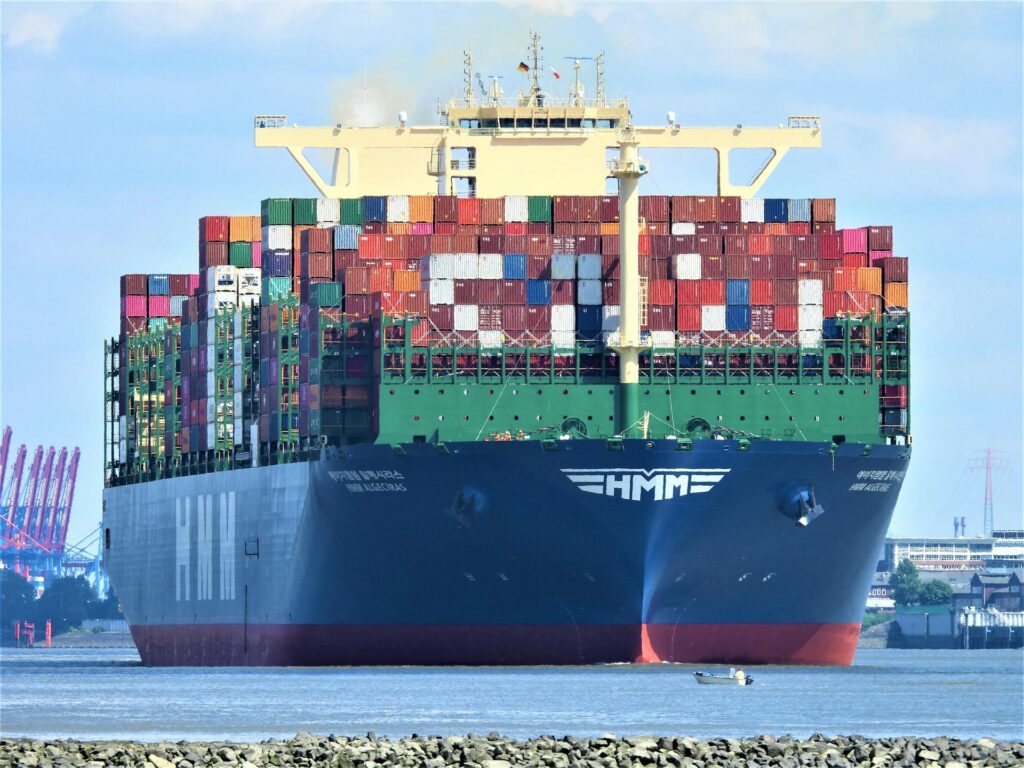
Breakbulk shipping is a specialized method of transporting cargo where goods are handled individually rather than being consolidated into containers or other standardized units. In this process, goods are loaded and unloaded separately, making it ideal for items like grains, timber, steel, metals, and other materials that don’t conform to containerized shipping. Breakbulk shipping is often chosen for cargo that cannot fit into standard containers or needs to be transported without being packed into uniform units. Special equipment is usually required to safely handle and transport these goods.
Importance of Breakbulk Shipping
Breakbulk shipping offers several key advantages that make it a valuable option for specific types of cargo:
Loading Flexibility: Breakbulk shipping allows for greater flexibility in loading goods. Individual items can be loaded without the need for consolidation into standard containers, enabling the easy transport of a wide variety of goods.
Cost-Effectiveness: In many cases, breakbulk shipping can be more cost-effective than container shipping, as it eliminates the need for specialized equipment like containers and reduces associated operational costs.
Suitability for Unpacked Goods: This method is ideal for transporting unpacked goods such as grains, raw materials, and heavy equipment, eliminating the need for specific packaging.
Time-Saving: Breakbulk shipping can sometimes be faster than containerized shipping, especially when goods need immediate handling or there is an urgent need for rapid transportation.
Space Efficiency: Breakbulk shipping makes more effective use of space when goods are not suited for containerization, allowing for more goods to be loaded onto the ship.
Handling Large and Irregularly Shaped Goods: This shipping method is particularly useful for transporting large or irregularly shaped items, such as heavy machinery and industrial equipment, making it a preferred option for industries that rely on these types of goods.
Types of Cargo Transported by Breakbulk Shipping
Breakbulk shipping is commonly used to transport a variety of goods that are not suitable for standard containers. Examples of cargo typically shipped via breakbulk include:
- Grains and Agricultural Products: Wheat, rice, oats, legume seeds, cotton, and sugar.
- Raw Materials and Metals: Coal, iron, copper, aluminum, and zinc.
- Bulk Food Products: Vegetable oils and other liquid food products transported in bulk without packaging.
- Timber and Wood Products: Sawn timber, wooden planks, and other wood products.
- Heavy Equipment and Machinery: Large industrial machinery, heavy equipment, vehicles, and oversized spare parts.
- Large Industrial Products: Industrial parts and mechanical equipment that cannot be consolidated into standard containers.
Using RoRo Ships in Breakbulk Shipping
RoRo (Roll-on/Roll-off) ships are commonly employed in breakbulk shipping, particularly for transporting vehicles, heavy equipment, and large cargo. RoRo vessels are designed to facilitate the easy loading and unloading of breakbulk cargo using the ship’s internal ramps. Key aspects of using RoRo ships for breakbulk shipping include:
Safety and Securing: Dedicated areas on RoRo ships ensure that breakbulk cargo is securely fastened and protected during transport using straps, chains, and ropes.
Special Equipment: RoRo vessels are equipped with ramps, cranes, and other tools to facilitate the quick and efficient handling of breakbulk cargo.
Good Storage and Arrangement: Cargo is strategically arranged to allow easy access during loading and unloading while being securely stored inside the ship’s holds.
Environmental Monitoring: Conditions such as temperature and humidity within the ship’s holds are monitored to maintain the safety and quality of the breakbulk cargo during transit.
Logistical Planning: Effective planning ensures the timely delivery of breakbulk cargo with minimal issues or delays.
Types of Shipping Methods Used in Breakbulk Shipping
Several methods are employed in breakbulk shipping, depending on the nature of the cargo and the specific requirements for transport and discharge. Common methods include:
- Manual Loading: Goods are manually loaded and unloaded using labor or manual equipment, typically for small or lightweight items.
- Use of Cranes and Lifts: Heavy and large goods, such as industrial equipment, are loaded and unloaded using cranes and lifts available at equipped ports and terminals.
- Use of Ropes and Special Straps: Ropes and special straps securely tie and fasten goods during loading and unloading, particularly for large or irregularly shaped items.
- Use of Pallets and Wooden Ladders: Pallets or wooden ladders may be used to distribute goods and facilitate loading and unloading operations.
- Use of Straps and Iron Shackles: For large and heavy cargo, straps and iron shackles provide additional security during transport.
Risks of Breakbulk Cargo Transport
Breakbulk cargo transport involves certain risks that must be carefully managed:
Damage to Goods: Rough handling or strong vibrations during loading and unloading can damage or destroy bulk cargo, leading to significant financial losses.
Delivery Delays: Challenges such as adverse weather conditions or issues during loading and unloading can cause delays in the delivery of breakbulk cargo.
Maritime Accidents: Vessels carrying breakbulk cargo face risks such as sinking or collisions, which can result in major losses.
Leakage of Hazardous Materials: In the event of accidents involving hazardous materials, leakage can cause environmental pollution or health risks.
Logistical Challenges: Breakbulk cargo operations may encounter challenges in storage, loading, and unloading, particularly for large or heavy goods.
How to Reduce Risks in Breakbulk Shipping
Reducing risks in breakbulk shipping requires implementing preventive measures and security procedures, including:
Training and Education: Ensure that employees handling breakbulk cargo are trained in safe practices according to local and international standards.
Proper Packing and Packaging: Use appropriate packing materials to protect goods during shipping, storage, and unloading.
Use of Suitable Transport Methods: Choose reliable transportation methods and carriers with the necessary certifications and licenses.
Compliance with Security Regulations: Verify compliance with local and international security regulations, including general safety standards for shipping and storage.
Insurance Verification: Ensure sufficient insurance coverage to protect breakbulk cargo from potential losses.
Logistical Environment Monitoring: Monitor environmental conditions during shipping, such as temperature and humidity, to maintain cargo quality.
Emergency Planning: Develop specific plans to handle incidents or issues during breakbulk shipping operations.
Collaboration with Partners: Maintain communication with supply chain partners to ensure proper coordination and exchange of information regarding shipping operations.
